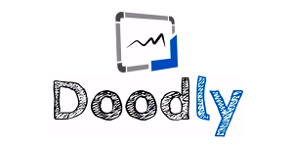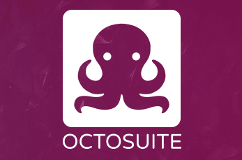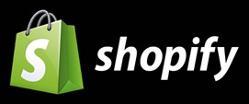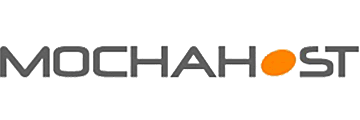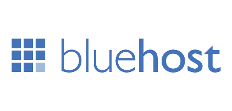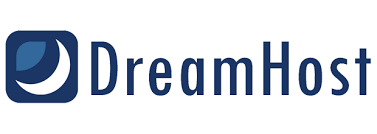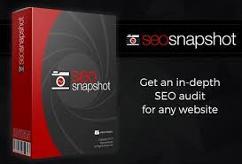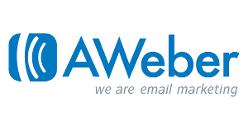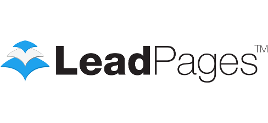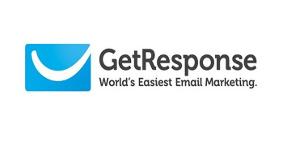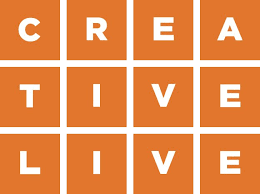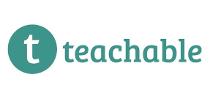
DIGITAL SUPERTRAMP
Copy Writing Glossary of Terms
*Beginner Level Internet & Affiliate Marketing Training.
The most common size of envelopes for direct mail packages: 4 1/8” x 9 1/2”.
Any toll-free, long-distance telephone service available for customers to call and order products or subscribe to a service.
The first, usually top-half of a website which is visible without scrolling.
An email that’s immediately sent out to acknowledge an action taken by a visitor to the site, who has provided his or her email address. For example, “Thank you for subscribing!”
The amount it costs a company to generate a new customer. For example, if a business mails 2,000 pieces at a cost of $800 and gets a 1% return, that amounts to 20 new customers at an acquisition cost of $40 per customer. The lower the acquisition cost, the better for the business.
A marketing action, like a direct mail campaign, with the goal of generating responses from new prospects who have never before done business with a company.
Copy that appears throughout a promotion that urges the prospect to do something, such as click a link, call a toll-free number, or fill out a form.
Prospects who have made purchases from a company within a specific time period, for example, within the last year are considered active buyers.
A call-to-action prompt for the visitor to place an item in the virtual shopping cart when ordering online.
The form in which an ad reaches a prospect, for example, the Internet, direct mail, television, radio, publication ads, and so on.
Advertorial
A paid advertisement which is designed to look like it is an article containing information. The name is combination of the words “advertisement” and “editorial.” The premise of the advertorial is that potential customers are more likely to read helpful information (thinking it is an article) than a blatant ad, therefore, they will learn more about your product or service. Advertorials can be extremely effective, however to be fair to customers, publications are requiring the words “Advertisement” or “Paid Advertisement” be added at the top or bottom of the advertorial artwork.
In marketing, being an advocate most often means you stand up for your prospect and are committed to his well-being, even if it means going head-to-head with a powerful group or traditional theories that others are promoting.
Text in the web “code” that describes a particular graphic or photo on a web page. This helps search engines “read” photos and other images, which in turn, affects search engine rankings.
To find or describe benefits in order to generate the most interest or capture the most attention in prospects.
See “average unit of sale”
Any copywriting project or job assigned by a client to a writer.
A reduction in numbers, for example, when the response to a certain mailing or promotion results in a reduced number of interested customers over the course of time; also when previously subscribed customers opt-out of a mailing list.
See “average unit of sale”
This is what copywriters should establish when writing promotions about products or services so it doesn’t read as “same old, same old.”
A series of follow-up emails sent out to site visitors who have already provided their email addresses, as a result of a purchase or signing up for a newsletter, membership, or free report. Oftentimes, the series will contain 3, 5, or 7 emails. They are prewritten and set up to automatically go out in order within a specified timeframe.
See “average unit of sale”
Also known as average sale, AS, or AUS, this is the total revenue earned by a promotion divided by the number of orders generated by that same promotion.
An idea introduced by copywriting legend Gene Schwartz that refers to the level of knowledge and understanding a prospect has for the benefits of a product or the existence of the product; also refers to the prospect’s understanding of how much he wants or needs the product.
See “business-to-business”
See “business-to-consumer”
Any sale that takes place after a prospect has made an initial purchase.
Any code that categorizes a product or service that gets sold to a prospect after he has made an initial purchase from a company.
banner ads
A graphic rectangular image on a web page that promotes a product or service. It’s similar to a print “space ad.”
The process of gathering and organizing orders as they come in.
See “bar code”
The thoughts and attitudes of a prospect that influence his buying decisions.
Used to describe the area that is not visible on a web page without scrolling down … it is derived from the concept of a newspaper, to describe the information on the bottom half of the front page, below where the newspaper was folded for distribution.
see “below the fold”
The deep, meaningful things a product or service brings to a prospect’s life; the positive impact of a product or service on an individual or on a company.
Any single powerful, unique idea or theme that propels the success of a promotion.
See “Big Idea”
A buckslip or promotional insert included with the mailing of a bill or invoice to a customer. Considered a cost-effective form or advertising, the concept is that the company is already paying to mail the invoice or statement, therefore, the promotional material “rides for free” inside the envelope. Also known as a statement stuffer.
A loose term that designates the act of showcasing related benefits on the cover page of a promotion. Traditionally, a billboard is a large advertisement displayed on the side of a road.
Slang term for the reply card that gets included inside a publication; readers circle the appropriate response number from an advertisement or article and mail in the card in order to request a magazine or other information.
A slang expression for “business opportunity,” often utilized in markets where prospects are interested or motivated by the idea of making money via a new venture.
A way to disguise direct mail as regular correspondence with the intention of enticing prospects so they are more likely to open the envelope. Blind envelopes are typically sent without teaser copy, without a company name or logo, and most often include a first-class stamp.
A website that features a repeatedly-updated personal chronicle. It often links to other websites and visitors can respond with their own comments. Its name is short for “web log.”
The main portion of the promotion. The middle part of written copy or text; the part that comes after the lead but before the close.
See “body”
The copy on a web page that follows the headline and intro text. It carries the reader through the entire justification process ? all the way to the call-to-action.
Creating trust and rapport between a company and a prospect in order to enhance the relationship and increase the likelihood of the prospect to buy now or in the future.
An offer placed in the box or envelope of something ordered by a prospect. Catalog mailers do this often by including the latest issue of their catalog or other promotional materials inside the package delivering ordered products.
An online statistic that shows the percentage of website visitors who leave a page for a different website rather than make a purchase or respond to a call-to-action. In email campaigns, the bounce rate refers to the percentage of emails that “bounced” back by spam filters and never made it to the intended recipients.
The identity of a specific business or product. The whole of the feelings, thoughts, ideas, and experiences of an organization or company that represent them to a prospect.
The art of establishing a brand that is easily recognizable by a prospect. Not to be confused with just the creation of a logo, branding includes a range of messages and communication materials. It also includes the name, sign or symbols, color combinations, taglines or slogans, and the company identity.
See “business reply card”
See “business reply envelope”
The point when the sales of a product or service are equal to the total cost required to promote and support it. All money after that breakeven point is considered profit.
Term used by marketers to describe a big realization or discovery that strongly impacts the results or success of a campaign. The slang term now associated with this is having an “a-ha” moment.
A booklet that promotes a product or service. It is not uncommon for company or product brochures to be multiple pages stapled together and printed on glossy paper stock.
A software program, such as Internet Explorer and Mozilla Firefox, used to find and present web pages to the user.
The amount of money an advertiser allocates to an advertising campaign.
Mail sent third-class for a lower cost. This is usually the approach mailers take to mailing several thousand mailings at a time.
At the point of sale, this is the attempt by a business to upsell a prospect on a product, or to add another product to their purchase. (“Would you like fries with that?”) Basically, the business (or salesperson) is trying to ‘bump up’ the total dollar amount of the sale, increasing profit.
A graphic image (like a starburst) used to draw attention to a special offer or opportunity. Used to generate excitement and catch the reader’s eye, a burst may be placed next to a photo of premium (“Free with purchase!”) or a “regular price” (“Special Offer $19.95”).
A postcard pre-addressed with a business’ name and address, intended to make it as easy as possible for a prospect to fill out an order or subscribe to a list. (BRC)
A promotion or advertising campaign that promotes the products and services of one business directly to another business (instead of targeting a consumer).
Any promotion or advertising campaign that promotes products and services from a business directly to a consumer.
Any company or individual prospect that orders and pays for a product or service.
Patterns of action by prospects, such as purchasing habits. Companies follow buying patterns or habits by prospects in order to determine what other products or services might appeal to them, and increase the chances of the prospect buying more.
A short section of copy designed to stand apart from the main body copy so as to draw attention to a specific point or quote. Often used to highlight a sale, free shipping, or some other important feature.
The point in a promotion at which the business pushes (encourages) a prospect to take action on an offer (e.g., make a call, place an order, sign up for mailing, click a link).
The tendency of the brain to compartmentalize information while shifting focus to another topic. This concept underscores the importance of avoiding a straight-arrow approach to a sales letter. In other words, if a reader can logically guess where a sales letter is going, he or she will stop reading and you’ll lose the sale.
Typically a second level web page. Category pages present information on distinct areas of information within a website. For example, “Our Services” can be considered a category page. As can “Running Shoes” on a website selling shoes.
A partnership between a nonprofit and a for-profit for mutual benefit.
When testing part of a promotion, such as the headline, different versions of the test are mailed to a set number of prospects. Each group of prospects is referred to as a cell. One cell is normally the “control” and all other cells are tested against it.
A third-party service “stamp of approval”, such as HackerSafe, TRUSTe, or BBB (Better Business Bureau) ? which signifies that the company is a trustworthy organization.
This is when a company offers a new product or service to a prospect for the first time. The product or service may not be brand new, but it’s the first time the prospect has had the opportunity to purchase it. The inaugural launch of a newsletter or magazine, product, club, even real estate opportunity can be referred to as a charter offer. This expression is often used to create a feeling of exclusivity for the prospect.
A machine-affixable label that is ungummed (as opposed to self-adhesive labels which already have a sticky surface on one side). Cheshire labels are prepared on a word processor or computer, and the cheshire label machine must cut and paste the label to affix for mailing. More commonly used in the past at mailing services for magazines, cheshire labels are being replaced by inkjet.
A type of benefit promised by a company that is usually backed up by some form of proof in order to make it seem more valid and believable.”
A term coined by Gene Schwartz that refers to the depth of the promise or claim made by a company. It is enhanced when your promise connects with your prospect’s desires, is supported by proof, has strong emotional ties, and fits well with the whole promotion.
The percentage of prospects that received and opened an email and clicked-through its links to an online sales page. Also describes the percentage of readers who click through an online sales page to the order page. (aka CTR)
The final stage of a promotion when the call-to-action is issued and the prospect is pushed for the sale.
Any copy used at the end of a promotion.
A promotion or mailing where two or more offers, usually coming from separate companies, are included on the same website or within the same envelope. In such a case, both companies share the promotion costs according to a predetermined agreement.
A method used by marketers to determine which list or test cell generated an order, usually made up of a series of letters and numbers on the response devices for the order.
When a prospect or prospect list has no prior relationship with you or has never purchased from your company, or has no knowledge or experience of any products or services you offer. It’s also a way to specify a lack of bond between a company and prospect. Cold prospects are much harder to sell.
See “cold”
See “cold”
Any printed material created to support sales by providing additional information, including pamphlets, brochures, inserts, or sales sheets.
A visual mock-up of certain concepts for a promotion (including website or printed materials), often presented as a work-in-progress to a client, in order the make it easier for the client to understand and visualize what the final artwork is going to look like.
A site that allows the consumer to look up a particular product, find out where they can buy it on the Web, read reviews, and compare prices. Three popular comparison sites are BizRate.com, Shopping.com, and Shopzilla.com.
Any product or company that offers either the same or similar benefits to something you offer.
The Big Idea behind any campaign or major element in the advertising world.
Material prospects want to read for informational purposes, not to be confused with marketing materials (so a white paper or case study would count as content in this capacity).
A mailing to a list that goes out soon after a successful test and is as much as ten times larger than the test was (assuming the list universe is large enough). This may also be part of a roll-out, which means a larger percentage of the entire balance of a list is receiving a mailing.
An offer where a prospect gets billed on a monthly basis, often defined as a simple period of time (e.g., 12 months). When not defined by a time period, the offer keeps going indefinitely until the prospect cancels.
Products or services purchased as a series of small orders instead of one at a time. Most companies begin with a starter item followed by similar products shipped at recurring time intervals. (For example, a book club may be a continuity program.)
Term for the best-performing promotion used by a company at a given time. It often serves as the standard or yardstick against which future promotions are measured. For example, a direct mail campaign would have a control cell, and then test other cells against it to see which promotion generates the best results.
The percentage of site visitors who take a specific action. This action can either be purchasing a product or service, downloading software, enrolling in a membership, or signing up for a newsletter. It’s calculated by dividing the number of site visitors by the number of times those visitors take an action.
Any text used by marketers to entice prospects to purchase, opt-in, or engage in some other action.
The document that explains the goal of the promotion a copywriter is writing, usually outlining objectives, strategy, information on the target audience, and other points beneficial to the writing process that will aid the writer in crafting a persuasive message.
The symbol ©, which means an individual or company owns the rights to certain material and can protect that material against illegal use from unauthorized agents. The purpose is to prevent illegal use of someone’s work.
A mock layout of how the copywriter sees the various elements of the web page being arranged. The writer then passes this layout along to the client and/or website designer.
A visual that gives the client an idea of what the copywriter envisions for the final layout of the promotion. It communicates the expected length of text, basic graphic suggestions and placement, and other conceptualizations of the package such as inserts and layouts.
The process of writing advertising promotional materials.
See “copy brief”
An emotion or need that a prospect feels or wants very deeply. Most often it is something that appeals to his or her wants, desires, or needs. Promotions must dig for the core desires to accurately connect with prospects.
Pages within a website that contain evergreen, highly valuable content that is closely tied to one of the site’s major themes, and that other related pages and posts link back to. These pages help the website to rank for high-level keywords and also help provide the site with a structure that is easier for visitors to navigate.
Any graphic element that intentionally violates the harmony of a promotion in order to draw attention to its message (e.g., “Free delivery!” or “Limited offer!”).
This is the total cost of a promotion divided by the total number of leads the promotion generated.”
The total cost of a promotion (including copy, design, list rental, printing and mailing costs, and postage charges) divided by the number of impressions were made in the thousands (e.g.: A mailing to 400,000 prospects that costs $200,000 has a CPM of $500 per thousand).
An envelope that is barcoded and pre-addressed to be returned to the company that mailed it. It is different than a business reply envelope (BRE) because the customer must pay postage.
See “cost per inquiry”
See “cost per thousand”
See “courtesy reply envelope”
See “copy brief”
Building or increasing the connection of trustworthiness between a prospect and a business. Statistics, track records, testimonials and endorsements, and supporting data are all used to increase the credibility, belief, and trust for the prospect.
Used to increase the amount of product sold overall. Often refers to promoting a product or item to a list of established customers who purchased some other product from the company.
(“Click-Through-Rate”) A tool to measure the effectiveness of an online ad campaign. It’s calculated by dividing the number of times an ad was displayed by the number of times the ad was actually clicked on. customer acquisition”
The list a company keeps of all established customers (and sometimes qualified prospects).
A computerized file that shows customer information, including name, address, phone, buying history, credit card, gender, etc.
An email sent in response to a customer’s question about a product or service that he or she has purchased.
A way to poll customers to discover their opinions, desires, concerns, hopes, and objections. Sometimes contains open-ended questions to create answers which can be used as testimonials. Many surveys are now done through the Internet due to the lower cost vs. postal fees.
A card used by most major direct-response mailers to store information about target prospects and customers, including demographics like gender, age, income, etc.
A collection, usually accessed via computer, of customer records complete with vital information about each prospect or customer.
Promotions that are sent to existing customers whose information is already available in the company database. Also known as mailing to the “house file.”
The process of eliminating duplicates from a list being used for a direct mail or email promotion. The main purpose of de-duping is to save money by avoiding unnecessary mailing expenses. Duplicate names or duplicate delivery addresses can be eliminated by a programmer. (Note: Removing duplicate names will eliminate those names which may appear on the mailing list more than one time. Removing duplicate addresses will eliminate mailing two or more pieces into the same household, for example, when a husband and wife both appear on a mailing list and the mailer only wants to send one offer to that address.) See also “merge-purge.”
The physical product of an advertising campaign that actually reaches out to the customer, e.g., an ad, press release, commercial, or website.
Any characteristics that describe segments within the human population, be it age, income, sex, or education.
Anything your prospect wants that relates to your products or your service area of expertise. The more your copy can connect with the deeper desires of your prospect, the more likely they are to buy.
The process of using a computer and designated software to combine graphics and text in various types of documents, including e-books, newsletters, and brochures.
A marketing term that refers to the act of making your product or service appear different from ? and more desirable than ? all others similar to it.
Any mailing piece that has a visual presence other than being a flat envelope; may be known as “lumpy mail” and essentially entices the prospect to open out of curiosity to find out what the gift or premium inside is. Often expensive to produce but usually a cost-effective way to reach out to sophisticated or hard-to-persuade audiences.
A term coined by marketing whiz Jay Abraham that refers to the process of drawing out and expanding on a concept.
The specific category of benefits where a vivid and compelling picture can be presented, enabling the prospect to picture in detail the use and key benefits of the product before he actually buys it. The goal is to make the product come alive to the prospect and spur his desires in order to increase the likelihood he will make the purchase.
A marketing and promotional strategy that uses paper mail to acquire new customers and send back-end product promotions to those customers. Direct Mail can include self-mailers, postcards, envelopes, magalogs, etc.
Any promotion sent out via direct mail. In other words, mailed through the postal service.
Promotions created to target a specific audience selected after a careful study of buying patterns and demographic and psychographic traits.
One of the major trade associations connected to the field of direct response marketing. The DMA puts an emphasis on marketing through mail, cell phones, and the Internet. Its main focus is on large companies and the ways in which they target audiences. See www.the-dma.org for more information.
Promotions that enable marketers to solicit an immediate, measurable response from recipients. (As opposed to “image advertising” which is only to inform or remind the prospects about the company or a product, but does not encourage a specific response at a specific time via a specific channel.)
Any advertisement offering a product or service for sale that is displayed in a magazine, newspaper, or online, but not a classified ad. Display ads vary tremendously in size, color, graphics, and amount of copy.
See “Direct Marketing Association”
A term coined by Master Copywriter Clayton Makepeace to describe the emotions of a prospect that dominate (i.e., the strongest emotions relevant to the product or service being sold), along with the emotions that are simply resident (i.e., long-standing, deep emotions in the prospect).
A list of individuals who have donated money to one or more fundraising organizations.
The date by which a marketer has received half of the total revenue a promotion will bring in. These dates are used to predict the final result of different lists and test cells in a mailing, allowing marketers to plan other promotions more quickly.
The act of making a lower-priced offer to prospects who turned down your initial offer.
dummy name
A fake name used in mailing lists so marketers can track how the list is being used. Many marketers add a dummy name to their own files so they can observe the way in which list renters use the list. A dummy name can also be called a “seed name.”
A daily, weekly, or monthly online newsletter sent by marketers to their subscriber list, which contains articles, editorial content, and sales promotions or messages.
A term used to describe any kind of competitive advantage one marketer or company has over another.
Usually the person who writes and oversees a newspaper, magazine, or newsletter, though it may be someone who coordinates the writing and the assignments for any type of copy or publication.
The copy featured in magazines, newspapers, or online news sites that is not promotional. Usually editorial pieces are articles, newsbriefs, fillers, or cover stories.
See “gates”
A collection of targeted names that have shown an interest in a company or service by opting in to a free newsletter or a downloadable report. Email lists for specifics types of targets can often be purchased as well and used for customer acquisition.
The process used by a company to communicate and promote products or services to targeted prospects via electronic communication.
The approach copywriters use within promotions to connect with prospects on a deeper level which may include speaking to feelings of fear, greed, pride, vanity, envy, or other, deeper emotions. Connecting copy with the right emotion can move prospects to take action and buy the product or service you’re promoting.
Any positive feeling experienced by a prospect when buying a company’s product or service. People buy for emotional reasons, then rationalize the purchase with features and logic.
In copywriting, emotions are the key feeling you need to connect to in your prospect. They are the single-most effective route to getting a prospect to buy. Successful promotions go beyond fear and greed to deeper emotions.
Positive commentary or words of praise from an expert in a field or a professional connected in some way to a product or service. Endorsements (often paid for) are used in copy to reinforce a prospect’s decision to buy.
Any business owner interested in new and profitable pursuits.
An agreement that takes place between two mailers who agree to exchange an equal number of mailing list names.
The desire of a prospect to belong to an elite group, usually an appeal in copy which flatters the prospect and elevates him or her above the masses.
The date upon which a promotional offer will no longer be available.”
Term used to describe a subscriber or customer who no longer actively makes purchases.
An agreement between a client and a copywriter where money is not exchanged for work but where the client agrees to give a testimonial or other form of public approval. Not an ideal business arrangement for any copywriter.
In copy, this is a short, introductory headline that appears in smaller type and is featured above the main headline.
The point in a promotion where a prospect assumes the writer is about to ask for money, but where the writer instead takes an unexpected turn and covers a different topic, usually either introducing another benefit or telling a relevant story.
A term from legendary Gene Schwartz used to describe the way bulleted copy is used to intrigue the prospect so forcefully that he can’t help but buy.”
Any specific trait or attribute held by your product or service; this would include specifications, sizes, etc.
Used to explain the way a prospect feels on an emotional level, not simply at a given moment.
The part of the web page that readers first see on their screen without having to scroll. It’s the equivalent of “above the fold” in a newspaper.
A top classification of mail by the United States Post Office. This mail gets delivered to the prospects faster but costs more than bulk mail.
A prospect who makes a purchase from a company for the very first time.
This is what happens when a benefit is off-target and does not excite a prospect, resulting in little or no emotion.
(aka “autoresponders”) Emails sent out to site visitors who have already provided their email addresses, as a result of a purchase or signing up for a newsletter, membership, or free report.
General, “boilerplate” text that appears at the bottom of every page on a website. Ideally, it contains the company name, address, telephone number, fax number, and customer service email address. It often includes a copyright and the web development company name, as well as an association membership seal, such as the Better Business Bureau, when applicable.
The Statement of Mailing that a lettershop must provide to the Post Office with delivery of a bulk mailing. This form identifies the mail class, sortation, postage rate, number of pieces to be mailed, and total amount of postage due. It serves as certification that mail has been received at the Post Office, verified by a stamp made on the form at the Post Office when the mail is dropped off.
The shape, size, and general makeup of a printed promotion. Options include: letter, magalog, bookalog, jumbo envelope, postcard, brochure, etc. Since the format can strongly impact the results of the mailing, important consideration is given when it is being written and designed.
The use of cyan (blue), magenta, yellow, and black ink combined in such a way that produces full-color artwork and photographs for a promotion. Also known as CMYK.
A stand alone flyer inserted into newspapers and shoppers. Free-standing inserts are not attached to the paper so they can fall out and capture attention.
A writer, artist, or photographer who is self-employed and not on staff with any company, though they may work on projects for companies as the need arises. In such cases, the work is done on a contract or “freelance” basis and the individual is paid per project.
Another term for customer acquisition. Front-end products tend to be less expensive with the goal of cultivating customers rather than generating profit. The opposite of “back-end.”
See “free-standing insert”
The act or process of delivering a product to a customer.
Any package containing the goods or details of a service as a result of an order or inquiry.
A benefit that’s presented in terms of what it will do for the prospect. It answers the “What’s in it for me?” question for the reader.
In B2B marketing, these are the employees who screen mail before it reaches the key decision-makers. It’s essential to get mail past these gatekeepers and to the high-level executives for whom it’s intended in order to land a sale.
Separate, odd-sized bits of paper, such as buckslips and lift notes, that are placed in an envelope with a sales promotion. Each paper serves as another way to persuade the prospect to buy. Different articles and sidebars of a marketing piece or magalog can be called “gates” or “gateways” into a promotion, meaning that some prospects will start by reading those instead of the beginning of the letter or promotion as it was designed. All gates are important because you never know which one a prospect will go in to.
In terms of mailings, this is the way a mailing list may be divided along regional, state, or country lines. Divisions may also be based on county, city, metro area, or zip codes. Some marketers select to only mail to specific areas, or they may sort the mailing list by geographic parameters before splitting it to test various cells. (Therefore, making sure the test results are based on the promotion, and not differences based on geographic factors.)
The manner in which a copywriter connects core desires to the sales pitch throughout a promotion. Usually, it’s in the form of a promise or central theme that runs through the entire promotion and keeps the reader from losing interest by reminding him or her of the benefits offered by the product or service.
(aka “F shape”) The portion of the web page that most readers immediately scan upon arrival. Tests prove that readers start at the top of the page, reading left to right, and then work their way down diagonally. Therefore, the triangle is widest in the top left section of the page and decreases in width as the readers eyes move down the left side of the page.
A free service offered by Google that allows marketers to analyze detailed and valuable statistics about the activity of visitors to their websites.
A free service offered by Google that allows marketers to view and analyze which specific keywords or key phrases are actually being searched for by the public at any given time.
Unlike a simple word link, a graphic link on a web page is a hypertext link, configured as a graphic feature or an icon (such as a Buy Now button).
Literally, copy in the Greek language that is used as a placeholder while putting together design mockups (for a direct mail piece or a website) before the actual copy is ready.
Any promise made to refund a customer’s money in the event he or she is unsatisfied with a purchase.
hard offer
Any offer where money is required upfront (as is the case for most offers).
” General, “boilerplate” text and/or images and logos that appear at the top of every page on a website.
The very first line of any promotion; the initial copy read by a prospect meant to lure him or her into reading the promotion.
A striking photo or image of either the product or the benefit of a service. It’s usually placed on the left side of a landing page, showing people what it is they’re buying.
The opening page of a website, whose primary purpose is to welcome visitors and provide information and links to other pages on the site.
Used to grab the attention of a prospect, making him or her want to keep reading, watching, or listening.
A selection of a business’ hottest customers or prospects; in other words, those most likely to buy again and again.
The most recent buyers of a product or service on a specific list that is no older than three months at most. These buyers who have recently purchased are the most likely to buy again and often have a history of purchasing goods through direct marketing.
Any mailing list cultivated and owned by a company with records of all customers (active and inactive), and qualified prospects.
See “Database marketing”
(“Hyper Text Markup Language”) A “behind-the-scenes” markup language for web pages. It’s used to structure the copy, present images, and create hypertext links between pages.
Nick Usborne’s phrase for emails and e-newsletters that just lightly apply HTML elements and graphics, while 90% of the document remains in standard text form.
Common, predictable patterns of human behavior that can be assessed and targeted through a promotion.
A word, phrase, or image found in an HTML-formatted web page. When clicked, it jumps to a new page or another section within the current page.
Individuals who have not placed an order or responded to an offer during a specified time period.
A link from another web page which connects to one of your web pages. Google and other search engines use these links to determine the relevance and rankings of web pages, making them very valuable.
The act of taking incoming calls from customers or prospects, for example on an 800 phone number as a result of a promotion.
The little extra premiums and prizes intended to increase response rates to a promotion.
A substitute for a postage stamp or metered postage that appears as a preprinted marking on the upper right hand corner of a mail piece. It usually says “U.S. Postage Paid.” The indicia indicates the permit number and mail class and is also normally preprinted on business reply envelopes.
When a copywriter leads a reader through ideas instead of directly telling him or her what’s coming, usually done through suggestion with the purpose being to make a prospect realize something without actually having to spell it out.
A direct-response ad delivered through the television, typically running 30-minutes long and designed to look like a television program rather than an ad. An infomercial is a combination of in-depth information and commercial for a specific product, and encourages purchase during a specific timeframe.
The person who organizes all the information on a website and creates a navigation system to help visitors quickly obtain that information.
The process of selling any information-based product, most often which comes in the form of an e-book or special report.
A page on a website that is focused solely on delivering useful, helpful information, as opposed to selling the product or service.
A sequence of emails sent by a company to inform, educate, and support their subscribers.
A prospect who requests more information about a product or service as a result of a promotion.
A person who has signed up to receive literature or information about a product or service, usually through direct mail (online, this person is called an “opt-in”).
A promotional piece “inserted into” a package or invoice to a customer.
Any prospect who purchases goods or services with the intention to pay for them in periodic, pre-arranged installments.
An offer where a prospect has the option to pay for a product or service in small increments on a schedule rather than paying the full cost all at once.
Marketing messages with the intent to build brand awareness or image for a company rather than elicit a response. There is no means included to track institutional advertising, and therefore, it is difficult to prove effectiveness.
Any combination of two or more forms of marketing used to sell a product or service. Some refer to this as a marketing mix.
The few short paragraphs on a web page that immediately follow the headline, generally appealing to the emotional side of the reader.
(“Internet Service Provider”) A company that provides its subscribers an entry point to the Internet. Many cable TV companies are also ISPs.
Used originally in direct mail, it’s a “box” of copy set apart at the top of an email or sales letter which contains the key elements of the message and the offer by the marketer.
A partnership between entrepreneurs or companies that gives both access to each other’s products or services.
Any grouping of numbers, letters, colors, or other marks, used to track and measure effectiveness for certain types of media, lists, direct-mail packages, ads, and catalog mailings. Key codes help to differentiate both the offer and date sent as well as the specific customer who is responding.
Sites like Wordtracker.com and KeywordDiscovery.com gather information from certain search engines (usually Google), and then present a list of keywords, phrases, long-tail and related phrases that are likely to get the most traffic from search engines.
Words and phrases that people type into a search engine when looking for answers or solutions to their problems. These words and phrases are also strategically placed into the copy of a web page to attract search engines that are matching searchers with relevant websites.
A journalistic term that describes a line of copy used to create context or to “kick” up interest for an article. The equivalent to a summary in web writing.
A tightly-focused web page with a particular audience in mind, designed to sell a product or service. The prospect “lands” on this sales letter page from a specific source such as a banner ad, an email, or a PPC (Pay-Per-Click) ad. The landing page can also capture information.
Literally, copy in the Latin language that is used as a placeholder while putting together design mockups (as in a website) before the actual copy is ready.
The act of collecting a list of prospective clients who will be likely to buy at some point; common term used in marketing, especially in B2B (Business-to-Business).
A letter that builds a prospect’s interest in a product or service with the intention of getting them to contact a company for more information. In direct mail, this is often done with an order form that stresses there is no obligation to buy anything. Online, it’s usually a link that lets people contact a company via email.
The most common direct-mail format, this is a letter printed on 8 1/2” x 11” paper and inserted into a regular #10 envelope.
A legal contract between a copywriter and a client designed to protect both and to outline payment, delivery schedule, product concept, and legal issues such as non-compete agreements.
A company that performs the tasks of creating a mailing, including collating, inserting the materials into envelopes, addressing, imprinting or inkjetting, and sorting the mail to meet the specifications of the Post Office. Also called a “Mail House.” Most lettershops also handle the data processing necessary to personalize the direct-mail promotion with name, address, zip code, and key codes for tracking purposes.
The total revenue a customer will generate for a company over the “lifetime” of their relationship.
A term used to describe any increase in response to a mailing, often achieved by adjusting the copy or mailing a new version of an older message.
See “lift note”
Similar to a lift note but produced in the style of a memo.
A small note, often in letter form, added to a main sales letter in an effort to emphasize a particular point about a product or service and increase response to the promotion. Lift notes are generally smaller-sized pieces of paper inserted inside the envelope of the direct-mail promotion. The expression “lift note” is also used on the Web for a short note added to enhance the main sales message being sent out via email.
Any offer made that includes a strict and immediate time deadline or expiration of a sale; often used to add urgency to an offer and increase response.
The group of prospects selected for a specific mail or email promotion. It is the most crucial part of any direct-response promotional effort. The list is often highly-targeted in order to elicit the highest response. Matching the right list with the right offer is one of the best ways to guarantee the success of a promotion. For a writer, knowing the “list” of who will be receiving the promotion is critical, in order to target what the recipient wants or needs to hear.
A company or specialist who rents mailing lists for direct mail and email, making all the arrangements necessary to bring list buyers and list owners together. List broker services may include research, list selection, evaluation, and recommendation.
An arrangement in which a marketer acquires the right to mail or email to a list of names, but on a one-time basis at a pre-set cost per thousand names.
A way to segregate smaller groups within a larger list; groups may be based on sex, age, income, education, or geographic region.
Part of a mailing list that is selected, usually randomly, to try and evaluate the effectiveness of an entire list (in other words, it’s used to test the quality of response from the entire list).
See “Letter of Agreement”
Direct response promotions that run between 12 and 24 pages, sometimes more.
See “Maximum allowable cost-per-sale”
A piece of direct mail that looks more like a magazine than like a sales letter. Usually contained within a colorful, glossy magazine-style format, it has lift notes, testimonials, endorsements, and information on premiums, as well as the direct mail letter. Magalogs are often designed as self-mailers.
The date a mailing goes to the Post Office to be processed for delivery.
See “lettershop”
The transaction of selling then buying that is carried out through mail. Mail orders can be placed by mail, fax, Internet, or telephone. Once the order is officially received, the merchandise can go directly to the buyer.
Any prospect who orders and pays for a product through postal mail.
A service that allows consumers to add or remove their names from mailing lists.
A web page that tends to rush and pressure the reader into taking an action, instead of earning the reader’s genuine trust and agreement.
The gross profit that is determined when you subtract the cost of goods sold from gross revenue.
The group of prospects you specifically target for your product or service. Knowing your market and determining what offers will generate the best response is an important key to a company’s success. Your target market is that very focused segment of the market that is most likely to be receptive to your product or service.
Someone who works in a professional capacity to build a business. May be a consultant, a copywriter, or an entrepreneur.
This refers to an instinctive connection with the way a prospect will respond to a sales approach. It comes from experience in the field and is important as a way to reduce time wasted with ineffective campaigns. It’s the feeling something will succeed or fail with your prospects.
A large percentage of the general public. When a product is so widely appealing to the mainstream population, marketers are able to sell it to a vast percentage of people, as opposed to a niche market created because of gender, age, income, interests, occupation, etc.
A dull finish on a paper; no glossy sheen.
A market that has sophisticated prospects and lots of competition; mature markets are generally more difficult to stand out in and sell products in.
This designates how evolved a market is. The maturity of a market must be understood before a product can be launched successfully into it.
What’s the most a client will spend to get a new customer?
A data programming process that allows for the removal of duplicate names and/or duplicate addresses from a mailing list. A merge-purge is necessary when multiple lists are purchased and there is the possibility of overlap or duplication. The goal of is to lower mailing costs. Also see “de-dupe” for more information.”
(aka “meta tag”) “Hidden” text in the HTML code that conveys a short description of the subject matter of the web page. Quite often, search engines will use this exact copy in the two lines sitting just beneath the title of the listing. It should include your primary keyword or phrase for that page to increase your search engine rankings.
The initial, smaller conversion steps that eventually lead to the main conversion step you want your client or prospect to take.
In copy terms, this denotes the amount of intensity and connection found in your body copy, also a way to describe copy that is mesmerizing and hard to put down. Copy with momentum will be successful with prospects.
An individual who has made two or more purchases from the same company, but at different times. Multiple buyers are important because they’re more likely to respond to direct marketing offers than other buyers are.
A publication commonly put out by companies to build relationships with their customers. Delivered on a consistent schedule, newsletters are normally brief and filled with articles like product announcements to inform prospects. They are a subtle sales tool and frequently used as a customer acquisition vehicle.
A subset or slice of the mass market. A niche market is narrowly-defined based on specialized area of interest. A niche could be based on demographics, but often in marketing, it is based on other descriptors. For marketers, niche examples may be consumers with new babies; people who own boats; Baby Boomers. For a writer, a niche may be writing only for specific industries, or specializing in specific types of promotions (i.e., only writing websites, or only writing grants).
The names on a mailing list that are undeliverable.
Also called nth select. The method used to extract names from a larger mail file to create a smaller file. For the nth selection to be truly representative, it is important that the nth name be chosen after all other data processing such as de-duping, NCOA, and postal sorting is complete. For example, you may choose to mail every 10th name, so the programmer selects every 10th name on the sorted mailing list to create a new test mailing list.
A sale that is obtained directly from a press release, which doesn’t happen often and is hard to do, but yet is possible with the skills of a good copywriter.
Everything that goes into the proposition made to a customer or prospect, including price of product or service, length of subscription, free gifts, discounts, payment terms, and guarantees.
Work done by a copywriter with no guarantee of pay, usually used only if a client likes the writer’s work and chooses to use it. In that case, the writer gets paid.
An item printed on a piece of paper with only one ink color, usually which is black on white paper.
An offer or promotion with the intention of making a sale through a single transaction.
A buyer who does not purchase anything after his initial purchase from a company.
A condition of normal list usage, list reproduction, or list exchange agreement between the list owner and the list user (the marketer). It means the marketer won’t use the names on the list more than once without explicit permission to do so. List owners often build “dummy” or “seed” names in to their lists in order to insure the lists are not used more than the agreed-upon terms.”
The percentage of emails opened by target prospects after reading the subject line of that email.
When a prospect chooses to be put on an email list and receive communications, they are opting-in. Often a name and email address is requested from a prospect in exchange for free information or as part of a purchase. Getting prospects to opt-in is an essential step in marketing through email because it makes it possible to legally build a qualified email list. Sending email to anyone who has not opted-in to your list is called spamming, and is illegal.
A method which allows a prospect to elect NOT to receive communications, and not to be added to an email list.
Also called a “response device” or “order device.” It can either be printed or can appear online with the goal of being easy to fill out so a buyer can purchase a product or service without complication. An order form generally includes a promise-oriented headline, a sense of urgency, acceptance of the product or service, a reminder of any relevant bonuses, the cost (and savings) the manner in which the prospect can pay, and an area where the prospect can enter contact information.
See “off-the-page”
An outgoing link from your website that connects to another site.
Calls that are made by a marketer to prospects (in contrast to inbound telemarketing, where the prospect makes the call to the marketer). Outbound telemarketing, in combination with direct mail, can effectively lift the overall response for the promotion. Most large direct mailers use trained outbound telemarketers who follow a specific script to generate sales.
Any offers included in a package or order that come from a company different than the one actually fulfilling the initial order that resulted in a package.
A term used to describe all of the elements of a direct-mail promotion sent to a prospect. Can either be a single-page letter, an envelope containing several components, or even a self-mailer.
Anything included in a mailed offer with a promotional intention; inserts to introduce products or services to a new market.
When one or more elements of a promotion (such as the copy, the graphics, the components of the package, the teaser copy on the outer envelope) are tested against each other.
Laying out a rough grid of the elements that comprise a web page, such as text, graphics, links, and navigation tabs, using tools like Word’s “text box” feature. Page mapping allows for visualization of the finished product.
The progressive series of pages by which someone moves through a site to find the desired information.
The copy that appears at the very top of a web page inside the thin blue “title bar.” This copy also repeats as the very first line of any search engine results listing.
A former control or test promotion that is no longer being mailed.
Term used to describe the amount of money that actually comes in after a promotion launch using a soft offer to prospects, compared to what is expected to come in after everyone has paid for the products they ordered. So, if 10,000 people place an order and 8,200 pay, your pay up is 82%.
A form of online advertising in search engines, where advertisers pay the placement company a fee every time their ad is clicked, and the user is taken to a specific website or landing page.
When a prospect’s name, address, or other personal information is inserted into the copy of a promotion via computer methods like laser printing.
To move people to take action by appealing to their core desires. Knowing how to write with persuasion makes you a more effective copywriter.
A well-paced sales page that earns the reader’s trust and genuine agreement every step of the way, without manipulation.
The description of what a prospect’s life will be like one he or she receives the product or service being offered. The goal is to get them to visualize themselves enjoying the benefits of that product or service.
Any offer that connects a free proposition with another offer.
The moment when a prospect purchases a product or service; the exact moment when the sale takes place and the prospect is either filling out an order form, calling in an order, or clicking an Internet order button.
Clear plastic bag used for a mailing in place of the envelope. Poly-bags are often used for magazine mailings.
See “poly-bag”
A web page window that appears beneath the page a prospect is viewing and is visible only when the prospect closes the current window being viewed.
Any new web page window that appears suddenly on top of the web page a prospect is viewing. Some websites use a pop-up window to encourage a visitor to sign-up to receive emails.”
A gateway (such as Google, Yahoo!, and MSN) for users to enter and access the World Wide Web.
The way in which you set up your product or service to be perceived by your prospect.
Often used at the beginning of the response device, this statement recounts all the superior benefits of a product.
The final part of a sales letter that typically reiterates a promise or provides additional benefits about the item being promoted. Many prospects read the P.S. first, which makes it a very important part of the sales letter.
Any free item offered to a potential buyer. A premium offers an additional encouragement for the prospect to make the purchase.
This is the dilemma faced by your prospect which your product or service is meant to conquer or solve.
Anything being sold to a prospect, whether it’s physically tangible or not (as in an mp3 recording).”
The difference between your overall costs and revenue.
Also known as an “assignment” or a “job,” this word is used to describe something a copywriter is working on, usually for pay.
The act of specifically telling a reader what the product or service being promoted will actually do, bring, or mean after purchase. In most cases, it tells the prospect how the purchase will make them richer, smarter, happier, stronger, healthier, etc.
The act of exposing your product or service to qualified prospects.
An email sent out with the basic purpose of selling a product or service.
The act of supporting any claims you make throughout your promotion.
A statistic, endorsement, or physical description used as evidence to substantiate a marketing pitch.
Any potential buyer for a product or service who has yet to actually make a purchase from a specific company.
The sum of individuals targeted for likely sale or connection by any company.
See “postscript”
The art of describing buyer preferences, interests, hobbies, and buying patterns.
Information that belongs specifically to nobody and can be used by anybody; information that is neither trademarked nor copyrighted.
The act of influencing the press so they publish or print stories that promote a favorable image for a company and its products.
Exaggerations made about a product or service by an advertiser.
An excerpt from a piece of text; often enlarged or emphasized as a design element to grab the attention of the reader.
The page on a website that a customer arrives at to purchase a product or service.
The act of removing unwanted names or duplicate names from a list. See “merge-purge” and “de-dupe”
Names and addresses of companies or people who have previously shown an interest in a product or service by responding in some way to a marketing campaign. These are the crucial leads to follow-up on because they are most likely to buy.
A list of subscribers for a business with a known interest in the business services or products (i.e., a previous purchase). Business will spend more time cultivating and bonding with a qualified list because repeat purchases are more likely.
A person identified to be an ideal candidate for the product or service you’re selling, usually based on prior purchases made to show interest or even the act of sending in a business reply card.
In magazine publishing, a rate card outlines all of the ad sizes, prices, deadlines, special topics, and circulation. rate sheet”
A document that lists all the fees for the services you offer as a copywriter, as well as the conditions under which you’ll agree to work (e.g., accepting half of payment upfront and the other half at project completion).
The act of giving prospects logical reasons to buy a product or service, usually going beyond emotional reasons and based on logical justification of a purchase. This is accomplished by recounting facts, figures, or features that reinforce the buying decision as a good one.
A program that tries to get previous, inactive customers to start buying again, especially when they haven’t purchased from a company for a while.
The ease with which a promotion can be read, a way of describing whether the copy flows smoothly or stays interesting.
A term made known by David Ogilvy that refers to the advertising process of methodically giving the prospect all the key reasons for buying a product or service right now.
A measurement of how long it has been since a customer or business has made a purchase (or any other tracked activity).
See “RFA”
Given when a customer is reimbursed for the money spent on a product or service.
The connection a company has with its prospects which can mean the difference between success or failure. A relationship must be cultivated and carefully maintained to establish enough rapport for prospects to want to follow through on buying decisions. With a solid relationship, prospects and customers will be more receptive to your offers.
The concept that all research related to a prospect or market must be as accurate and pertinent as possible; speaks to the level of understanding a copywriter has for connecting to a prospects thoughts, emotions, and beliefs.
Any subscription renewed prior to expiration, or within six months following expiration.
The act of collecting relevant information, proof, and other data to help a company more effectively sell its products and services. Effective research will uncover the nuggets which will make your copy resonate with your prospect on a deeper level.
Trackable, measurable positive responses from consumers regardless of advertising medium.
The number of responses received from a promotion indicated as a percentage of the total number of pieces mailed.
The percentage of customers who continue to do business with and make purchases from a company over a specified period of time.
(ROI) A measurement of the financial success of a promotion. The higher the ROI, the more effective the medium or campaign was at generating profit.
Also known as Recency, Frequency, and Amount, this is the common acronym used for codes that select small groups of buyers from a larger file. Marketers may choose to mail to customers who have made purchases within the last 60 days (recency), have bought a certain number of times within the year (frequency), or who have spent a specified amount of money with the company (amount).
A marketing device where the risk is placed solely on the shoulders of the marketer, such as a “30-day unconditional refund” if the customer is not fully satisfied with the product or service.
See “Return on Investment”
Mailing out a successful letter to increasingly larger groups.
The methodical process that follows after the testing of a campaign which has proven successful. The rollout is typically larger than the test mailing and/or goes to larger list segments or the entire list of a company.
See “royalties”
The fee paid to direct-response copywriters based on the number of packages sold via the promotion written by the copywriter. Some royalties are paid based on the number of pieces mailed or distributed. Typically, royalties vary between $10/M and $50/M.
See “royalties”
(“Really Simple Syndication”) Much like a wire service, it’s an online format used to distribute news and blog entries in a syndicated manner. This feed can be placed on a personal web browser so the user receives continual news from desired sources.
Also known as the body copy of any promotion or advertisement; is the main copy that runs from the lead to the close. (It does not include sidebars, pull quotes, testimonials, or captions.)
When a prospect spends money with a company, in any form, it is considered a sale.
The series of points made in any sales copy as to why a prospect should buy the product or service you are promoting vs. any other option or competition. Claims made in your sales argument need to be backed up by proof.
A page on a website designed to sell a product or service. Unlike a landing page, which is a stand-alone selling tool, a sales page sits permanently within the body of a website.
An expression that references the sales argument made throughout a promotion but which usually appears at the end of a promotion when the prospect is directly asked for the sale.
A blocky font in which letters and other characters lack the small, curled features called “serifs” at the end of each stroke of letter. Sans serif fonts include Arial and Helvetica.
In relation to copywriting, this describes the type of prospect who doesn’t read copy word-for-word but instead scans through to get an idea of the product, price, and offer. Subheads are critical at capturing the attention of a scanner.
A digital image showing all or part of what is seen on the screen of a computer monitor.
A website (e.g., Google, MSN, Bing, or Yahoo!) that searches, gathers, and files content from websites across the Internet. Visitors seeking information type keywords into the search engine query box. The search engine then lists the most relevant content websites to match those keywords.
(aka “SEO”) The method of boosting the amount of traffic to a website or web page. The higher the search-engine ranking, the more likely the site will be frequented by visitors.
(aka “web crawler”) A software program that gathers, reports, and indexes information from the World Wide Web to provide the most current data available for search engines. It’s called a spider because it crawls over the Web. All the major search engines, like Google, Yahoo!, Bing, and MSN use spiders to build and update their indexes.
A class of mail created by Congress and subsidized to support the press, meaning these postage rates are available to newspapers, magazines, and other types of periodicals.
A specific name added intentionally into a list in order to keep track of how and when the list is being used. A client can also add a “seed” name into their own mailing in order to verify delivery and accuracy of the mailing. Also known as a “dummy.”
A promotion mailed without an envelope.
The voice with which a copywriter writes that carries a specific tone and style in an effort to “speak” effectively and persuasively to a prospect. Personable, friendly, and conversational tones work best.
A font where each character has a curly “serif” mark on the top and bottom of the stroke. Serif fonts include Times New Roman and Palatino.
Refers to the act of selling something besides a tangible product.
Special premiums used to get a mail-order buyer to increase the dollar amount he or she normally spends.
An online metaphor, it’s the software program that enables shoppers to keep a list of the items they’ve selected from the “online store” before making an actual purchase.
Small blocks of text often seen in magalogs and on Internet landing pages which contain copy and a headline separate from the main body text of the promotion. Sidebars make it possible to highlight benefits, elements of proof and credibility, along with testimonials.
A web page that employs just one column for the primary sales copy; usually used in stand-alone landing pages. It’s been proven that a single column for the primary text reads easier and converts better than multiple columns.
(aka “site metrics”) The system of analyzing and reporting the habits of website visitors. It tracks every aspect of a visitor’s journey from entry to activity around the site to exiting. Among the more popular site analytics packages are Google Analytics, StatCounter.com, HitsLink.com, and WebTrends.com.
Any individual page on a website, whether it’s a home page, a sales page, an information page, etc.
The art of influencing behavior as opposed to buying decisions.
A way of describing the maturity level of a prospect and a market that refers to the level of exposure the prospect and market have received when it comes to certain products or services.
A shorter kind of direct-response print ad that gets placed in newspapers, magazines, and other print publications.
See “on speculation”
Often given in conjunction with information products, special reports are compilations of valuable, free information that is written to solve a problem or in some way provide a benefit to the prospect.
Representative samples selected from the same mailing list that are used to test different promotions. Also known as a split run test.
The term referring to any two pages that show side-by-side in a magalog or bookalog. The center spread is the two middle pages which face each other.
A page whose sole purpose is to collect a person’s name and email address.
A printed piece that carries a customer’s statement of account and gets inserted in an envelope. Also refers to any promotional inserts that are included with the statement being mailed. (See bill enclosure)
The overall plan that guides marketing efforts toward greater success.
Bolded, often centered sentences used to separate long copy. Good subheads should contain a benefit or interesting, eye-catching point to catch the attention of anyone scanning the text.
The line in an email that announces the subject of the email when it appears in the person’s inbox. Compelling subject lines are critical to getting emails opened.
A page designed to get someone to sign-up for either a free or paid-for online service, such as a weekly e-newsletter.
See “track record.”
An offer promising a prize that is randomly drawn from those names of people who respond to a promotion. Often, no purchase is necessary to participate.There are often specific rules to follow for a sweepstakes.”
A collection of successful, eye-catching, or interesting promotions, sales letters, and ads, put together by savvy copywriters who recognize the importance of having a library of ideas to “swipe” from.
When a copywriter “borrows” a phrase or words from a winning promotion, but, of course, changes them to suit the specific promotion he or she is writing.
Refers to the specific, methodical actions a copywriter takes to improve results, which may include upselling, testing, using referrals or premiums.
A branding phrase that delivers the essence of a product or service. It often appears just under the company name or logo in the header of a web page. For example, “Just Do It” is the Nike tagline.
The ideal prospect or customer within a market sought by an advertiser. A target prospect is designated as the ideal candidate to buy a specific product or service.
The ideal group of people who are most likely to make a purchase from a specific company.
This is the underlying premise of all web searches. People are actively searching to find something or do something.
Words that appear on the outside of a direct-mail envelope intended to grab a prospect’s attention or build interest enough to the point of getting them to open the envelope. These are also used in emails with the intention of driving readers to an online sales page.
The process of building value in the mind of the prospect without revealing the secret.
Any specific thing you can do to enhance the performance or impact of your sales copy.
The art of using telephone calls in the sales and marketing process.
A new promotion that is tested against the strongest-performing promotion of a company.
The term used to identify each part of a sample within a split test.
Words of praise or gratitude from someone who has benefited from a product or service. No compensation is normally provided in exchange for a testimonial. Satisfied customers are ideal testimonial candidates.
An email written in plain text without graphics or colors.
A word or phrase that is typed out and most often appears in blue and underlined. For example, Learn more. It then links to another page.
The overall vision or plan for a piece of copy which should be based on your Big Idea. It has to do with what you say, how you structure it, and how you present your solution (i.e., the product or service you’re selling.)
A very common web page design with the center column containing the headline and critical copy. The left column is for navigation tabs and the right column is for extras like free offers, sign-ups, graphics, testimonials, etc.
Any involvement device, such as a perforated order card or removable sticker (“Yes” or “Free Gift”), intended to cajole the prospect into taking an action that shows he or she wants to buy.
Using current information, such as events taking place in the news, to position your product or service to the best advantage in light of your prospect’s beliefs, fears, and desires.
This is the record of performance of a product or service, outlined to demonstrate credibility. It’s usually presented as a summary of past or consistent successes and gives your prospect a realistic expectation of success.
See “keycodes”
The name or symbol that prospects associate with a company or product, generally which is legally restricted to use by the owner or manufacturer. Most often denoted as ™, which is used when a trademark has been applied for (the ® symbol is used once the name or symbol is legally registered).
An essential part of the selling process because prospects tend to buy from people and companies they trust. It’s a way of presenting the right face or attitude to your prospects.
The name used to identify a person’s account on the social media site Twitter, also the name to which replies are directed. For example, Carl Customer’s Twitter handle could be carlcustomer, so messages to her, using Twitter markup, would be sent to @carlcustomer.
When an item is printed using only two colors (for example, black and blue).
Term used to describe the optimum picture and result your prospect desires.
An essential element of marketing success. A copywriter must understand his or her prospect, market, product, or company, in order to relate to them enough to write effective copy.
Also known as the USP, this is the explanation for why the product or service you’re selling is different and superior to all competition. The USP should highlight the unique benefits and advantages of a product or service in a compelling way that engages your prospect.
Copy that tells people why and how a product or service is unique, and more valuable than anything being offered by its competitors.
The idea that a copywriter must make his or her promotion different enough from similar promotions to stand out in the mind of a prospect, and promote the benefits of the product or service in a way that differentiates it from the competition.
The total number of names who might be included in a mailing list who all adhere to a set of specifications (e.g., age, location, religious preference).
The act of asking your prospect to buy something else along with the original purchase you have persuaded him or her to buy. This happens often when a “deluxe” or “advanced” version of a product or service is offered. It’s a more sophisticated version of “Do you want fries with that?”
(Uniform Resource Locator) An Internet address, such as www.awaionline.com or www.asknickusborne.com
(aka “visitor centric” or “reader centric”) Writing copy that focuses on the needs, wants, problems, or desires of the user, as opposed to the features of the product or service that’s being offered.
See “Unique Selling Proposition”
A key advertising principle. Value is communicated to the prospect by making him or her feel like the benefits of a purchase far exceed the cost.
This is when a copywriter charges for the value of work given, not necessarily based on an hourly fee or even on a per-project fee. It’s a way to anticipate the return on investment of a company when commissioning work by a highly-skilled copywriter.
This term refers to how qualified or ready to buy a prospect is. Warm prospects usually already have a connection with and trust a company or a market.
A newer application of the World Wide Web that enables users to interact and share information online. Blogs, video sharing, and social network sharing sites are excellent examples of this phenomenon.
The tracking and posting of activity on a website.
When the response to a promotion or other mailing cannot be tracked because it was sent without a key code.
An authoritative report written to provide readers with a detailed understanding of a specific product, technology, or method, white papers are often used as part of the sales cycle by business-to-business companies. Government agencies also use white papers to explore and explain problems and issues along with possible solutions.
“What’s in it for me?” The copywriting adage that reminds the writer to focus attention on the needs of the reader, as opposed to the features of the product or service being offered.
An envelope with an opening through which the address can be seen; sometimes covered with plastic or glassine.The sizes and position of the window opening can be standard
Term used for successful copy, though not necessarily copy that becomes a control. At the very least, it’s used to describe a promotion that makes lots of money according to the client’s standards.
A feature of Microsoft Word that allows users to “block out” in boxes the various elements on a page, so others can see the page layout as the writer envisions it.
When you need or want to write something, but you are drawing a blank and can’t figure out where to start or how to get your project going.
**This site is supported by Ad Placement, Native Advertisement & Affiliate Advertisement links. We may earn commissions on products and services mentioned, shown, and linked to in our content.
For those who prefer online to off!
DigitalSupertramp.com offers resources, articles, information, videos, training & education about Internet Marketing, Content Creation, Media Production, Video, Photography, Graphic Design, Motion Graphics, VFX, Web Development, App Development, Content, Content Creation, Copy, Copy Writing, Branding, Blogging, Vlogging, Video Marketing & Internet Marketing. Digital Vagabond, Digital Nomad, Digital Tramp, Coding, Work from home, Telecommute, Work Online, VA, Virtual Assistant, Social Media Marketer, Social Media Marketing, Online Business, Web Developer, Web Development, Web Master, Author, Authority, Advertisement Agency, Lead Generation, Geofencing, Digital Influencer, Social Media Influencer, Travel Blog, Travel Vlog, Travel Video, Adventure Travel, Travel Adventure
© Copyright Digitalsupertramp.com


























